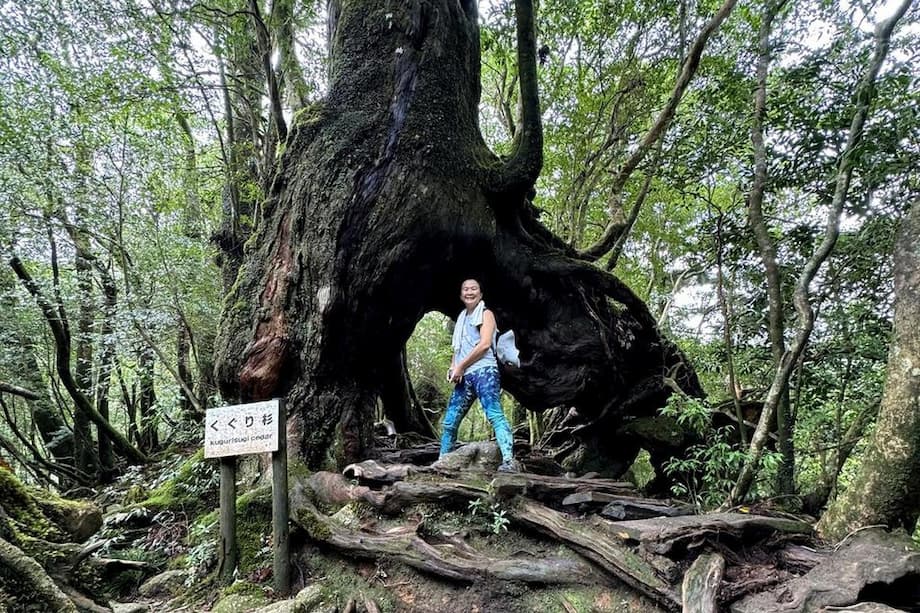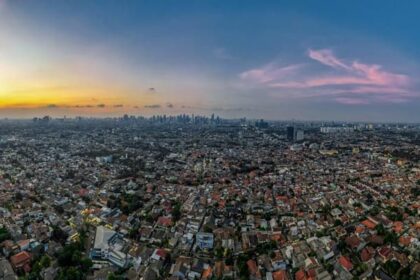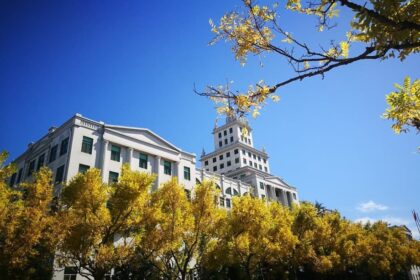The Enchanted Forest of Yakushima: Real-Life Inspiration for Princess Mononoke
Deep in the southern reaches of Japan, a mystical island rises from the East China Sea, shrouded in mist and legend. Yakushima, a UNESCO World Heritage site, is home to some of the world’s oldest living trees and a forest so enchanting that it inspired the lush, magical setting of Studio Ghibli’s 1997 animated masterpiece, Princess Mononoke. For fans of the film and lovers of nature alike, Yakushima offers a rare glimpse into a world where ancient trees, mossy stones, and spiritual folklore intertwine.
- The Enchanted Forest of Yakushima: Real-Life Inspiration for Princess Mononoke
- Yakushima: A Natural Treasure of Japan
- Shiratani Unsuikyo Ravine: The Heart of the Mononoke Forest
- Princess Mononoke: A Cinematic Love Letter to Nature
- Yakushima’s Ancient Trees: Guardians of Time
- Experiencing Yakushima: Travel and Conservation
- The Enduring Legacy of Princess Mononoke and Yakushima
- In Summary
Princess Mononoke, directed by Hayao Miyazaki, is celebrated for its complex themes of environmentalism, the clash between industrial progress and nature, and the ambiguous morality of its characters. The film’s forest, alive with towering trees and mysterious spirits, draws directly from the real-life landscapes of Yakushima—particularly the Shiratani Unsuikyo Ravine. But what makes this island so unique, and how did it come to inspire one of the most beloved animated films of all time?
Yakushima: A Natural Treasure of Japan
Yakushima sits about 60 kilometers south of Kyushu, Japan’s southernmost main island. Roughly circular and covering about 500 square kilometers, the island is dominated by mountains, with its highest peak, Mount Miyanoura-dake, reaching 1,936 meters. Over 75% of Yakushima is mountainous, and much of it is covered in dense, ancient forest. The island’s unique ecosystem supports more than 1,900 plant species, 16 species of mammals, and 150 species of birds, making it a biodiversity hotspot recognized by UNESCO in 1993.
The climate of Yakushima is famously wet, with locals joking that it rains “35 days a month.” This abundant rainfall, combined with the island’s volcanic terrain, has created an environment where ancient cedar trees—known as yakusugi—thrive. Some of these trees are estimated to be between 1,000 and 7,200 years old, their gnarled trunks and moss-covered roots bearing silent witness to millennia of history.
Among the most famous of these ancient trees is the Jomon Sugi, a colossal cedar believed to be up to 7,200 years old. Its discovery in 1968 sparked a movement to protect Yakushima’s forests from logging, leading to the island’s designation as a World Heritage site and a national park.
Shiratani Unsuikyo Ravine: The Heart of the Mononoke Forest
For many visitors, the main draw of Yakushima is the Shiratani Unsuikyo Ravine, a 1,000-acre expanse of mossy woodland perched atop an 800-meter mountain. The ravine is easily accessible from the port of Miyanoura and offers a variety of hiking trails, ranging from gentle walks to challenging treks. The forest is dense with Cryptomeria japonica (Japanese cedar), including the revered yakusugi and the even older jomon sugi.
Walking through Shiratani Unsuikyo is like stepping into another world. The forest floor is a tangle of roots and stones, all blanketed in vibrant green moss. Sunlight filters through the thick canopy, casting an emerald glow over everything. The air is thick with moisture, and the silence is broken only by the sound of running water and the occasional call of a deer or monkey. It’s easy to see why Miyazaki and his team were captivated by this landscape.
One of the most iconic spots is the Moss Covered Forest, or kokemusi-mori, which directly inspired the look and feel of the Mononoke Forest in the film. Lead artist Kazuo Oga reportedly spent hours sketching the forest, striving to capture its otherworldly atmosphere. Animators used over 200 shades of green to bring the forest to life on screen.
Hiking the Trails of Shiratani Unsuikyo
There are several main hiking routes in Shiratani Unsuikyo:
- Yayoisugi Cedar Course (2 km, about 1 hour): An easy walk suitable for beginners, leading to the ancient Yayoi Cedar.
- Bugyosugi Cedar Course (3-4 km, 3 hours): A moderate hike passing several notable trees and scenic spots.
- Taikoiwa Rock Round Trip Course (5.6 km, 4 hours): A more challenging trek culminating at Taikoiwa Rock, which offers panoramic views of the island.
Along the way, hikers may encounter Yakushima deer, Japanese macaques, and a variety of rare plants. The trails are well-marked, but weather conditions can change rapidly, and river crossings may become hazardous after heavy rain. Proper hiking shoes and preparation are essential.
Princess Mononoke: A Cinematic Love Letter to Nature
Released in 1997, Princess Mononoke is set during Japan’s late Muromachi period (1336–1573), a time of social upheaval and environmental change. The film follows Ashitaka, a young prince cursed by a demon, as he journeys west in search of a cure. He becomes embroiled in a conflict between the gods of the forest and the humans of Irontown, who are exploiting the land for resources.
The forest in the film is not just a backdrop—it is a living, breathing character, inhabited by animal gods, spirits, and the enigmatic Forest Spirit. The kodama, or tree spirits, are particularly memorable, their clicking heads and glowing eyes symbolizing the health of the forest. These spirits are drawn directly from Japanese folklore, where they are believed to inhabit ancient trees and serve as guardians of the woods.
Miyazaki’s depiction of the forest is deeply rooted in Shinto beliefs, which hold that natural objects—trees, stones, rivers—possess kami, or divine essence. In Princess Mononoke, this spirituality is palpable, with the forest portrayed as a sacred space under constant threat from human encroachment. The film’s nuanced portrayal of both sides—humans seeking survival and progress, and nature fighting for preservation—reflects the real-world tensions that have shaped Yakushima’s history.
Hayao Miyazaki once explained his vision: “In my films, I want to show that the world is not just black and white. Nature and humans are not enemies, but part of the same whole.”
The Real-Life Connection: Miyazaki’s Pilgrimage to Yakushima
In the 1990s, Miyazaki and his team traveled to Yakushima to study its forests firsthand. They based themselves in a simple house by the Anbo River, sketching and absorbing the island’s atmosphere. The result is a film that feels authentic and immersive, capturing the spirit of Yakushima’s ancient woods.
Lead artist Kazuo Oga’s dedication to realism is evident in every frame. He meticulously recreated the mossy stones, twisted roots, and filtered light of Shiratani Unsuikyo, ensuring that the film’s forest would resonate with viewers as a place of both beauty and danger.
Yakushima’s Ancient Trees: Guardians of Time
The ancient cedars of Yakushima are more than just trees—they are living monuments to the island’s history and resilience. The most famous, the Jomon Sugi, is estimated to be between 2,170 and 7,200 years old. Its massive trunk and weathered branches have survived countless storms, earthquakes, and human threats.
Other notable trees include the Yayoi Sugi, a 3,000-year-old cedar that was recently snapped in two by Typhoon Shanshan. The loss of such an ancient tree is a stark reminder of the fragility of even the most enduring natural wonders. Local forestry authorities are currently assessing the damage and considering how best to preserve what remains.
Tour guide Taro Watanabe reflected on the loss: “Yayoi sugi is one of the most famous among the huge trees on the island. Its accessibility made it a favorite for visitors, and its destruction is a great sadness for the community.”
Logging once threatened Yakushima’s forests, particularly during the Edo period and after World War II. Many ancient trees were felled for building materials, but the less desirable, gnarled cedars were left standing. Today, these survivors form the backbone of the island’s protected forests, drawing visitors from around the world.
Experiencing Yakushima: Travel and Conservation
Reaching Yakushima requires some effort, but the journey is part of the adventure. Most travelers arrive via ferry from Kagoshima or by plane from Osaka, Fukuoka, or Kagoshima. Once on the island, public transportation is limited, especially to the interior, so renting a car is recommended for those wishing to explore the heart of Yakushima.
Visitors can enjoy a range of activities:
- Hiking through Shiratani Unsuikyo and other forest trails, including the challenging trek to Jomon Sugi.
- Forest bathing (shinrin-yoku), a Japanese practice of immersing oneself in the sights, sounds, and scents of the forest for relaxation and mental well-being.
- Wildlife watching, with opportunities to see Yakushima deer, macaques, and rare birds.
- Hot springs (onsen) scattered across the island, perfect for soothing tired muscles after a long hike.
- Beaches and marine life, including nesting loggerhead turtles and vibrant coral reefs.
Yakushima’s status as a World Heritage site has helped protect its forests, but the island still faces environmental challenges. Typhoons, landslides, and the pressures of tourism all pose risks to the delicate ecosystem. Conservation efforts focus on maintaining trails, educating visitors, and monitoring the health of ancient trees.
Tips for Visiting Yakushima
- Prepare for rain—waterproof gear is essential.
- Bring proper hiking shoes and supplies, as some trails are remote and facilities are limited.
- Respect the natural environment by staying on marked trails and carrying out all trash.
- Consider hiring a local guide for longer hikes or to learn more about the island’s history and ecology.
The Enduring Legacy of Princess Mononoke and Yakushima
Nearly three decades after its release, Princess Mononoke continues to inspire audiences with its powerful message and breathtaking visuals. The film’s depiction of the Mononoke Forest has drawn countless fans to Yakushima, eager to experience the real-life magic that captivated Miyazaki and his team.
But the connection between Yakushima and Princess Mononoke is more than just visual. It is a testament to the enduring relationship between humans and nature—a relationship that is both fragile and profound. As visitors walk the mossy trails of Shiratani Unsuikyo, they are reminded of the importance of preserving these ancient forests for future generations.
As filmmaker Steve Atkins described his pilgrimage to Yakushima: “Each character, each tree, each stone felt like a breathing part of a vibrant tapestry weaving a living story of an ancient place.”
In a world where environmental challenges grow ever more urgent, the story of Yakushima and Princess Mononoke offers hope and inspiration. It is a call to respect the natural world, to find balance between progress and preservation, and to recognize the spirit that animates all living things.
In Summary
- Yakushima is a UNESCO World Heritage island in southern Japan, famed for its ancient cedar forests and unique biodiversity.
- The island’s Shiratani Unsuikyo Ravine directly inspired the mystical forest in Studio Ghibli’s Princess Mononoke.
- Yakushima’s forests are home to some of the world’s oldest trees, including the Jomon Sugi and the recently damaged Yayoi Sugi.
- The film’s themes of environmentalism and spiritual connection to nature reflect the real-life reverence for Yakushima’s landscape.
- Visitors can hike, forest bathe, and experience the island’s wildlife, but must be prepared for challenging weather and terrain.
- Conservation efforts are ongoing to protect Yakushima’s fragile ecosystem from natural and human threats.
- The legacy of Princess Mononoke and Yakushima’s forests continues to inspire artists, environmentalists, and travelers worldwide.












